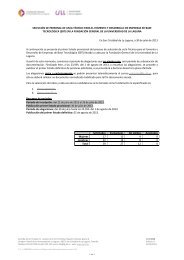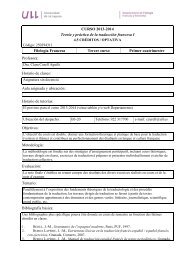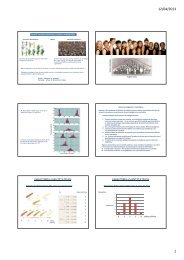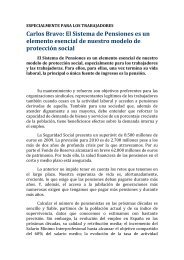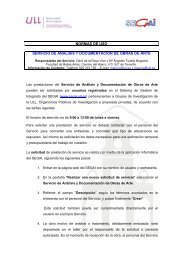20 CHAPTER 3 REVIEW OF CONJOINT ANALYSIS THEORY ...
20 CHAPTER 3 REVIEW OF CONJOINT ANALYSIS THEORY ...
20 CHAPTER 3 REVIEW OF CONJOINT ANALYSIS THEORY ...
Create successful ePaper yourself
Turn your PDF publications into a flip-book with our unique Google optimized e-Paper software.
members. The following is a brief description of the labels formats presented to the<br />
participants.<br />
<br />
<br />
<br />
<br />
<br />
<br />
Label A - simple disclosure, “ contains genetically modified ingredients”<br />
Label B - “GE” logo, plus inspected and approved by the FDA<br />
Label C - “GE” logo plus inspected and approved by the FSIS<br />
Label D - “GE” logo, plus contains genetically modified ingredients<br />
Label E - the presence of a logo “GE”<br />
Label F - text disclosure, “genetically modified to increase vitamin A<br />
content”<br />
<br />
Label G – text disclosure, contains genetically modified ingredients, long<br />
term effect not known<br />
<br />
<br />
Label H - Less than 5% of ingredients are genetically modified.<br />
Label I - “GE” logo, plus “less than 5% of ingredients are genetically<br />
modified”<br />
<br />
<br />
Label J - “GMO FREE”<br />
Label K - text disclosure “Genetically modified to reduce pesticides use”<br />
When asked how knowledgeable they were about biotechnology, most<br />
participants demonstrated some awareness of what biotechnology involves or is<br />
associated with. One participant said “ It’s the way they are changing food in a scientific<br />
way.” Another participant made reference to “breeding chickens to have a desired trait”<br />
as what comes to mind when biotechnology is used. When asked if terms such as<br />
genetically engineered, genetically modified, genetically modified organism (GMO) or<br />
29






